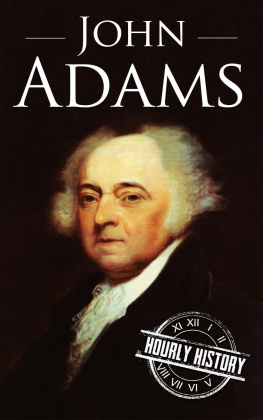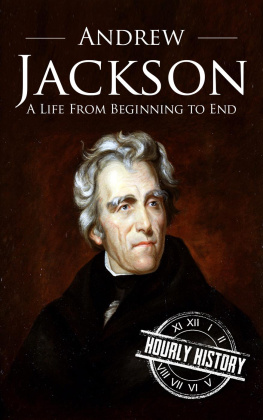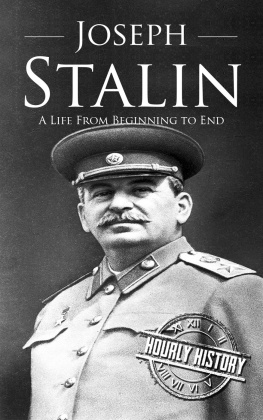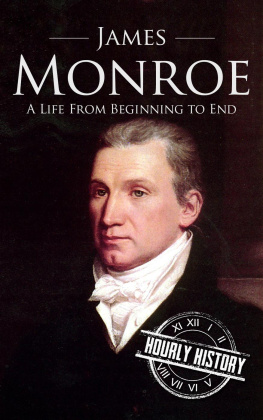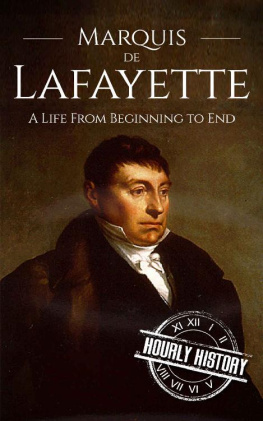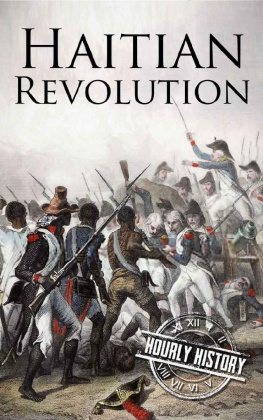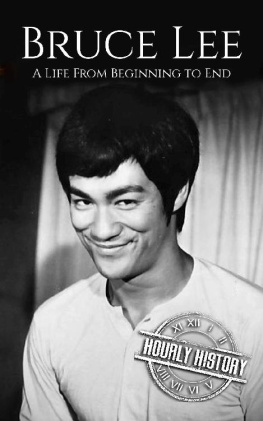Queen Victoria: A Life From Beginning to End
Hourly History
Published by Hourly History, 2016.
Table of Contents
Introduction
T he story of Queen Victorias life is a difficult one to tell if only for its duration. Victoria lived for 81 years and was Queen of Great Britain and Ireland for 63 of those years, six decades during which the industry, economy, society and foreign policy of Great Britain changed dramatically. The world Victoria was born into was a very different one to that which she left behind, and her life story is an incredible journey from infant heir to matriarchal Queen and Empress.
Victoria lived two lives. One was the public life of a Queen, and later Empress, who was at the service of her subjects and responsible for representing her nation to the rest of the world. The other life was a private one as a loving wife and mother of nine children, dedicated to creating a happy and productive household. Victoria made a valiant attempt to incorporate the public and private spheres of her life in a way no other woman had before, but ultimately it was too big a task too far ahead of its time.
Victorias childhood was not a happy one, and her middle years were dominated by the death of her husband Albert, a tragic loss she never fully recovered from. However, there was much joy in Victorias life too, in the glamour and folly of her early years as Queen, in her dedication to her work as regent, and in her large, influential family.
Unusually, the story of Queen Victorias life has been written in part by her own hand. Victoria wrote an estimated 2,500 words every day, kept a daily journal, and wrote constant letters to family and friends. Described at different points in her life as a spoiled child, a stubborn young Queen, a subservient wife, a cruel mother, a reclusive widow, a benevolent matriarch, a warrior Queen, and a principled sovereign, there are many sides to Queen Victoria. We can only hope to begin to understand a few of them here.
Chapter One
An Unsentimental Marriage
I will be good!
Queen Victoria
T he story of how Queen Victorias mother and father met and married is not a romantic tale. Nor is the story of Victorias conception - which could accurately be described as the result of a crisis of succession.
In the year 1817, King George III was on the throne. George was of the House of Hanover, the Royal dynasty that had ruled Britain since 1717 when it took over from the House of Stuart. In 1817 there was only one clear contender to take over the British throne on Georges death, his granddaughter Princess Charlotte.
Despite the fact that George III fathered 15 children nine sons and six daughters his sons had produced just one suitable heir between them. The sinful situation of George IIIs seven sons (who lived into adulthood) was, before 1817, as follows:
The Prince Regent (George), who later became George IV, was locked into an unhappy marriage with Caroline of Brunswick. The pair had one child together, Princess Charlotte before they were formally separated. George enjoyed the company of a number of mistresses.
The Duke of York (Frederick), was married to Princess Frederica Charlotte of Prussia. The marriage was unhappy from the outset, and the couple had no children together.
The Duke of Clarence (William); Duke of Kent (Edward); Duke of Cumberland (Ernest) and Duke of Cambridge (Adolphus) were not expected to figure in the succession as they were George IIIs younger sons. Except the Duke of Cumberland, all of George IIIs adult sons were either married but estranged from their wives or unmarried and enjoying a bachelors lifestyle.
However, in 1817 the only clear and legitimate heir to the British throne, Princess Charlotte, died in childbirth along with her child. This tragic event created a dynastic crisis that threw the entire royal family into action. The Hanoverian dynasty was unpopular with the public, who thought their days as powerful rulers were numbered. King George III famously suffered from mental illness and most of his sons lived a lifestyle the British public deemed excessive and immoral. The family knew that key to keeping the Hanoverian dynasty alive was to secure an heir.
The middle-aged Hanoverian Dukes, whom Victoria often referred to later as her wicked uncles, immediately sought out new wives to give them a legitimate heir. The Duke of Kent was the winner of this unsentimental race up the aisle as in 1817 he promptly discarded his mistress of some twenty-seven years, Madame de Saint-Laurent, and rushed into an arranged marriage to Victoire of Saxe-Coburg.
This union was the result of a careful dynastic calculation that saw the political benefits of uniting the houses of Saxe-Coburg and Hanover. Victoire was the sister of Prince Leopold of Saxe-Coburg, the husband of Princess Charlotte. Leopold had recently lost both his wife and unborn child and any claim to the British throne along with it, and he hoped that by marrying his sister to the Duke of Kent he could still stage a Saxe-Coburg takeover of the British crown.
Chapter Two
Race to Produce an Heir
Conceived, born and bred...to mount the summits of greatness.
Edith Sitwell
A lthough the marriage between the Duke of Kent and Victoire of Saxe-Coburg may not have begun on the most romantic footing, the couple did appear to be a good match and Victoire soon became pregnant. On the 24th May 1819, Victoire gave birth at Kensington Palace to the child who would later be named Victoria. The childbirth was witnessed by the Archbishop of Canterbury and other political figures, as was the custom when succession was under scrutiny.
At her birth, Victoria was fifth in the line of succession to the British throne after her father, the Duke of Kent and his three older brothers, the Prince Regent, Duke of York, and Duke of Clarence, respectively. The Duke of York attempted to disguise his designs on the throne and never mentioned the succession question in relation with Victoria, but Edith Sitwell nonetheless described the bouncing baby as, conceived, born and bred...to mount the summits of greatness.
The Prince Regent was much displeased by Victorias birth and did not wish to see the offspring of his brother take to the British throne, even if it was many years after his own death. The Prince Regent expressed his displeasure at the naming ceremony of the new heir in a somewhat petty display. Vetoing the name Georgina, which he felt too closely resembled his own, and Charlotte, the name of his dead daughter, he settled on Alexandrina Victoria, a foreign-sounding name chosen with the intention of making Victoria appear unsuitable for the British throne.
In 1820, both Victorias father the Duke of Kent and King George III died within six days of each other. Victoria was just eight months old at the time. The Prince Regent succeeded to the throne as King George VI, and Victorias position shifted to third in line to the British throne after her uncles, the Duke of York and Duke of Clarence, neither of whom had children.
Thanks to financial support from her Uncle Leopold of Saxe-Coburg, Victoria was raised at Kensington Palace in England by her mother, the formidable Duchess of Kent. Despite the fact that Victoria was in fact three-quarters German, she was raised to speak English as her first language and always addressed as Your Royal Highness. By Victorias own admission in letters written later in her life, she was a spoiled child raised by a suffocating but affectionate single mother. Happy and healthy and, in portraiture, cherubic, Victoria was often described as a willful child. Despite Victorias sylvan surroundings, her life at Kensington Palace was one of confinement. Moreover, she often described her childhood as an unhappy one.







